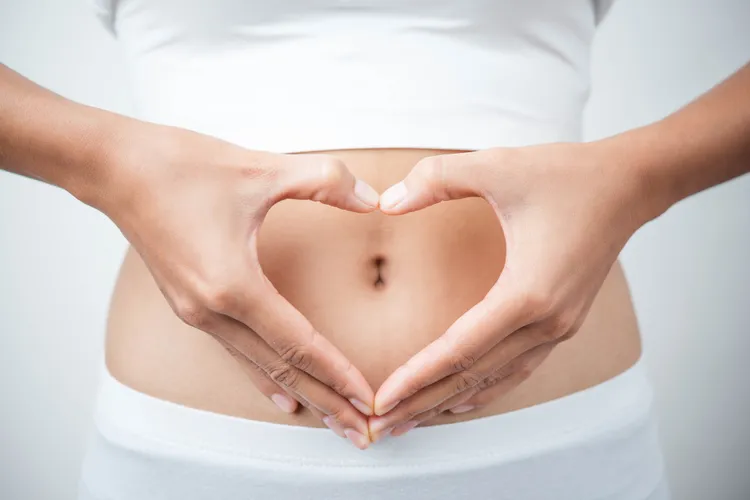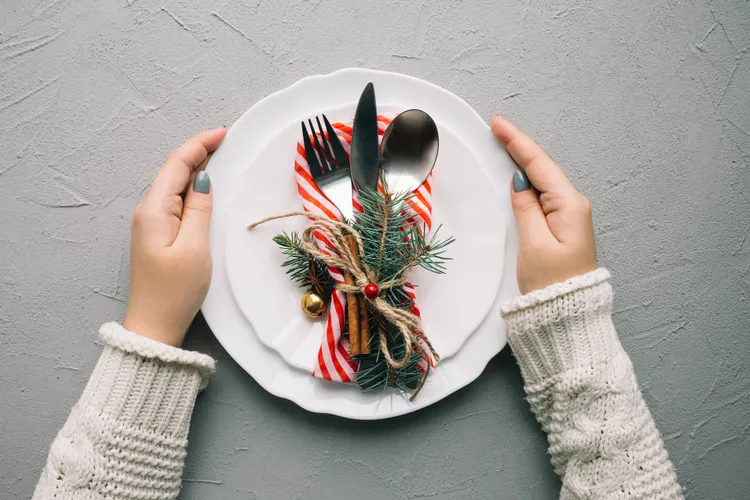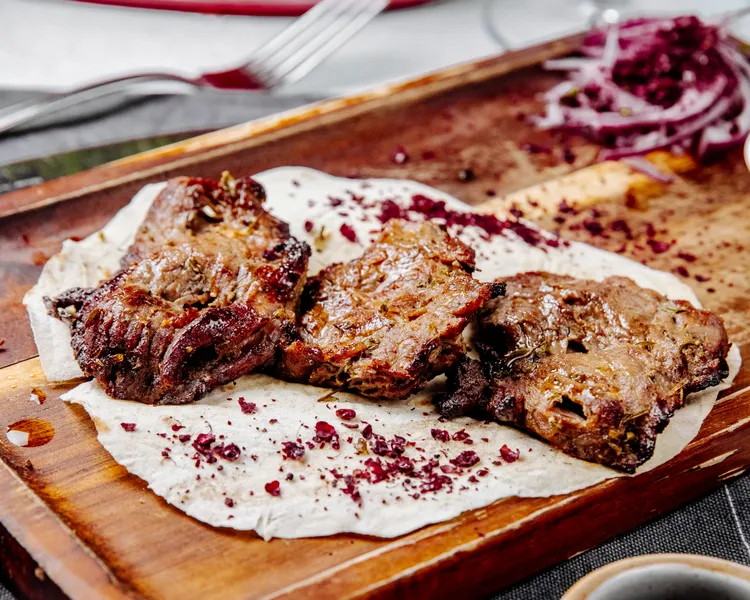Top 12 Foods to Eat During Your Period: Nourish Your Body Through the Cycle
Menstruation can be a challenging time for many women and people with periods, with symptoms like cramps, bloating, fatigue, and mood swings often making the week feel like an uphill battle. While rest, hydration, and self-care are key to managing these symptoms, nutrition plays a massive role in how your body copes with the hormonal and physical changes during your period. Eating the right foods can help alleviate discomfort, boost energy, stabilize mood, and replenish nutrients lost during menstruation.

Why Nutrition Matters During Your Period
Before we jump into the list, let’s talk about why food choices are so important during menstruation. Your body is working overtime during your period - shedding the uterine lining, managing hormonal fluctuations, and, for many, dealing with pain and fatigue. Key nutrients like iron, magnesium, omega-3 fatty acids, and antioxidants can help:
- Replenish blood loss: Menstruation causes blood loss, which can deplete iron levels and lead to fatigue or even anemia if not addressed.
- Reduce inflammation: Certain foods can help tame inflammation, easing cramps and discomfort.
- Balance hormones: Healthy fats and specific nutrients support hormonal regulation, which can stabilize mood swings.
- Boost energy: Nutrient-dense foods combat the sluggishness that often accompanies periods.
- Ease digestive issues: Bloating and digestive sensitivity are common during menstruation, and the right foods can help soothe your gut.
With that in mind, let’s explore the top 12 foods to prioritize during your period, backed by science and practical tips for incorporating them into your meals.
- Leafy Greens (Spinach, Kale, Swiss Chard)
Why they’re great: Leafy greens are packed with iron, which is critical during your period to replace what’s lost through blood. They’re also rich in magnesium, which can help relax muscles and reduce menstrual cramps, and vitamin K, which supports blood clotting and may help manage heavy bleeding.
How they help:
- Combat fatigue caused by iron deficiency.
- Ease muscle tension and cramping due to magnesium.
- Provide antioxidants to reduce inflammation.
Pro tip: Pair leafy greens with a vitamin C-rich food (like bell peppers or citrus) to enhance iron absorption.
- Salmon and Other Fatty Fish
Why they’re great: Fatty fish like salmon, mackerel, and sardines are loaded with omega-3 fatty acids, which have anti-inflammatory properties that can help reduce the intensity of menstrual cramps. They’re also a great source of vitamin D and protein, which support mood regulation and muscle repair.
How they help:
- Reduce prostaglandin production (hormone-like compounds that cause uterine contractions and pain).
- Boost mood by supporting brain health.
- Provide sustained energy through high-quality protein.
Pro tip: If you’re vegetarian or vegan, flaxseeds or chia seeds are excellent plant-based sources of omega-3s (see #6).
- Dark Chocolate (70% or Higher)
Why it’s great: Dark chocolate is a period-friendly indulgence that’s rich in magnesium and antioxidants. Magnesium helps relax muscles and alleviate cramps, while antioxidants combat inflammation. Plus, it can satisfy sweet cravings and boost serotonin for a mood lift.
How it helps:
- Eases cramps and muscle tension.
- Provides a natural mood boost.
- Satisfies sugar cravings with less guilt than processed sweets.
Pro tip: Choose chocolate with at least 70% cocoa to maximize benefits and minimize added sugar.
Why they’re great: Lentils, black beans, and chickpeas are excellent sources of plant-based protein, iron, and fiber. These nutrients help replenish energy, support digestion, and combat bloating, which is a common period symptom.
How they help:
- Replace iron lost during menstruation.
- Stabilize blood sugar to prevent energy crashes.
- Promote regular bowel movements to reduce bloating.
Pro tip: Soak beans overnight to improve digestibility and reduce bloating.
Why they’re great: Bananas are a fantastic source of potassium, which helps regulate fluid balance and reduce bloating. They also contain vitamin B6, which can ease mood swings and PMS symptoms, and natural sugars for a quick energy boost.
How they help:
- Reduce water retention and bloating.
- Support mood stability through B6.
- Provide a quick, portable energy source.
Pro tip: If bananas aren’t your thing, avocados are another potassium-rich option.
- Flaxseeds and Chia Seeds
Why they’re great: These tiny seeds are powerhouse sources of omega-3 fatty acids, fiber, and lignans (plant compounds with hormone-balancing properties). They’re especially helpful for vegans or those avoiding fish.
How they help:
- Reduce inflammation and cramping.
- Support hormone balance to ease PMS symptoms.
- Promote healthy digestion to combat bloating.
Pro tip: Store flaxseeds in the fridge to maintain freshness, and grind them before eating for better nutrient absorption.
Why they’re great: Oats are a comforting, nutrient-dense carb source packed with fiber, B vitamins, and magnesium. They help stabilize blood sugar, provide sustained energy, and support relaxation to ease period discomfort.
How they help:
- Prevent energy dips and mood swings.
- Support muscle relaxation to reduce cramps.
- Promote healthy digestion.
Pro tip: Opt for whole rolled or steel-cut oats over instant varieties for maximum nutritional benefits.
Why it’s great: Ginger is a natural anti-inflammatory and pain reliever, making it a superstar for easing menstrual cramps. It also helps soothe nausea, which some experience during their period, and supports digestion.
How it helps:
- Reduces cramp intensity by lowering inflammation.
- Eases nausea and digestive discomfort.
- Provides antioxidants to support overall health.
Pro tip: Aim for 1-2 grams of ginger daily (about a ½-inch piece of fresh ginger) for cramp relief.
Why they’re great: Eggs are a complete protein source loaded with vitamin D, B vitamins, and choline. These nutrients support energy, mood, and brain health, which can take a hit during your period.
How they help:
- Stabilize energy and mood.
- Support muscle repair and recovery.
- Provide satiety to keep you full and satisfied.
Pro tip: Choose pasture-raised eggs for higher omega-3 content.
- Berries (Blueberries, Strawberries, Raspberries)
Why they’re great: Berries are bursting with antioxidants, vitamin C, and fiber, which help reduce inflammation, support digestion, and combat oxidative stress during your period.
How they help:
- Reduce inflammation and cramping.
- Enhance iron absorption (thanks to vitamin C).
- Satisfy sweet cravings with natural sugars.
Pro tip: Frozen berries are just as nutritious as fresh and often more budget-friendly.
- Nuts and Seeds (Almonds, Pumpkin Seeds, Walnuts)
Why they’re great: Nuts and seeds are rich in healthy fats, magnesium, zinc, and vitamin E, all of which help reduce inflammation, ease cramps, and support hormone balance.
How they help:
- Alleviate muscle tension and cramping.
- Support hormone production and balance.
- Provide sustained energy and satiety.
Pro tip: Soak nuts overnight to improve digestibility and nutrient absorption.
- Turmeric
Why it’s great: Turmeric contains curcumin, a potent anti-inflammatory compound that can help reduce menstrual pain and inflammation. It’s also a powerful antioxidant that supports overall health.
How it helps:
- Eases cramps by reducing inflammation.
- Supports liver detoxification for better hormone balance.
- Boosts mood and fights oxidative stress.
Pro tip: Pair turmeric with black pepper to enhance curcumin absorption.
Additional Tips for Eating Well During Your Period
- Stay Hydrated: Dehydration can worsen cramps and bloating. Aim for 8–10 cups of water daily, and consider herbal teas like chamomile or peppermint for additional soothing benefits.
- Limit Inflammatory Foods: Reduce processed foods, sugary snacks, caffeine, and alcohol, as these can exacerbate cramps, bloating, and mood swings.
- Eat Small, Frequent Meals: This helps stabilize blood sugar and energy levels, preventing crashes that can worsen period symptoms.
- Listen to Your Body: Cravings are normal, but try to satisfy them with nutrient-dense options (like dark chocolate instead of candy).
- Supplement Wisely: If you struggle to get enough iron or magnesium through food, talk to a healthcare provider about supplements, especially if you have heavy periods.
Sample Meal Plan for Your Period
Here’s a simple one-day meal plan incorporating the foods above:
- Breakfast: Oatmeal with sliced bananas, blueberries, chia seeds, and a drizzle of almond butter.
- Snack: A handful of almonds and a square of dark chocolate.
- Lunch: Grilled salmon with a spinach and chickpea salad, dressed with olive oil and lemon.
- Snack: Ginger tea with a side of fresh strawberries.
- Dinner: Lentil and vegetable soup with turmeric and a side of sautéed kale.
- Dessert: Chia pudding topped with raspberries and a sprinkle of pumpkin seeds.
Your period is a natural part of your body’s rhythm, and nourishing it with the right foods can make a world of difference in how you feel. By focusing on nutrient-dense, anti-inflammatory foods like leafy greens, salmon, dark chocolate, and turmeric, you can support your body through the physical and emotional demands of menstruation. Experiment with these 12 foods, listen to your body’s needs, and find what works best for you. Here’s to feeling your best, even during that time of the month!
Disclaimer: Always consult a healthcare professional if you experience severe menstrual symptoms or suspect nutrient deficiencies, as individual needs may vary. For personalized dietary advice, consider working with a registered dietitian.









